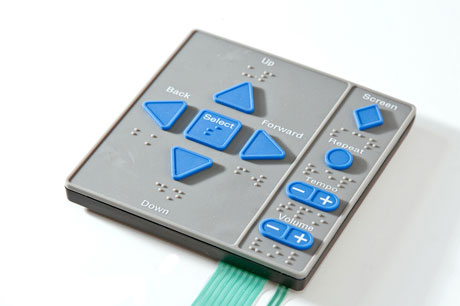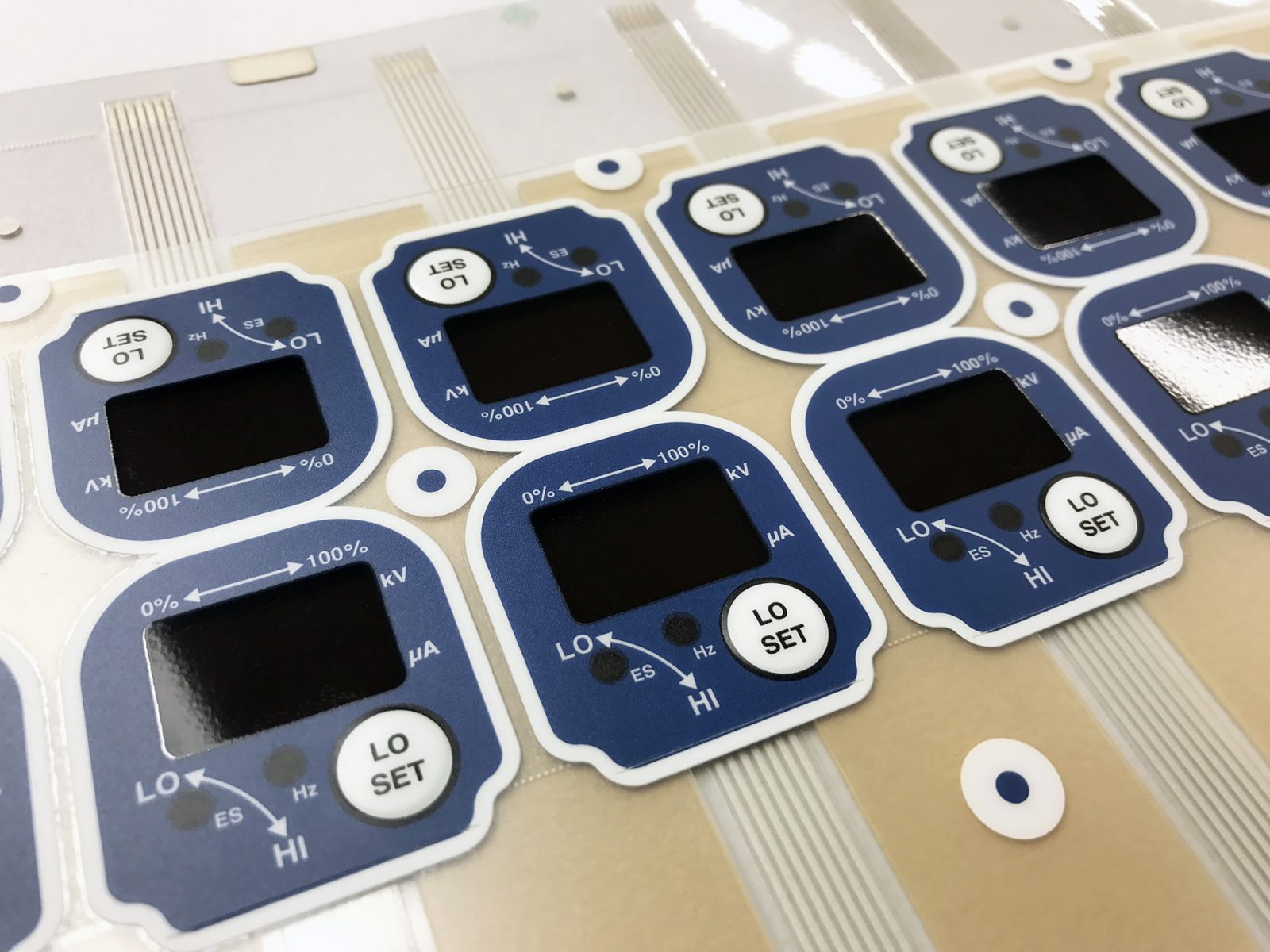Just How Membrane Switches Offer Seamless Procedure in Rough Environments
Just How Membrane Switches Offer Seamless Procedure in Rough Environments
Blog Article
The Ultimate Source on Membrane Switches Over: Layout, Functionality, and Applications
Membrane layer switches over offer as a fascinating junction of design and performance, playing a pivotal duty in contemporary user interfaces throughout numerous industries. This resource unpacks the crucial components that add to their performance, consisting of graphic overlays and circuit traces, while likewise clarifying the devices behind their pressure activation. As we explore the varied applications of membrane layer buttons, it comes to be evident that their adaptability and resilience are essential in atmospheres ranging from healthcare to consumer electronic devices. The nuances of their style and functional principles might disclose even much deeper insights worth thinking about.

Comprehending Membrane Buttons
Membrane buttons are a sort of customer interface technology extensively utilized in various electronic devices, characterized by their slim, versatile design and performance. These buttons are composed of several layers that include visuals overlays, glue layers, and circuitry, making it possible for a reliable and portable user interface for users. They can be found in home appliances, medical gadgets, and commercial control panels, supplying a reputable method for user interaction.
One of the primary benefits of membrane switches is their ability to stand up to impurities such as dust and dampness, making them suitable for atmospheres where toughness is important. Their inconspicuous design enables smooth assimilation into various applications, while the adjustable visuals overlays improve individual experience by providing clear aesthetic feedback. In addition, membrane layer switches can accommodate a selection of technologies, such as responsive comments and backlighting, more boosting their usability.
The production process for membrane layer switches normally includes screen die-cutting, printing, and lamination strategies, making certain accuracy and consistency in manufacturing. On the whole, membrane layer changes represent a versatile and reliable solution for modern-day electronic gadgets, combining functionality with aesthetic charm in customer interface design.
Secret Parts and Design Components
A variety of crucial parts and layout aspects come with each other to produce an efficient membrane button. At the core, the visuals overlay offers both visual and functional objectives, supplying a straightforward user interface while safeguarding inner components from environmental variables. The option of products, normally polyester or polycarbonate, affects resilience and responsive responses.
Beneath the overlay, the adhesive layer makes sure the switch sticks safely to the substrate, which can be steel, plastic, or glass. The spacer layer is crucial, as it preserves the necessary space between the circuit and the overlay layers, enabling efficient actuation. Membrane Switches. Circuit traces, usually made from conductive ink or adhesive, are published on an adaptable substratum, enabling electrical signals to be transferred when pressure is used
Design considerations also include the plan of responsive domes or embossing that offer physical responses to the customer, improving the general experience. Additionally, the layout and spacing of the buttons have to be optimized for simplicity of usage, guaranteeing that individuals can browse the user interface intuitively. On the websites whole, these components and design elements function synergistically to develop a trustworthy, useful membrane layer switch customized to details applications.
Functionality and Operation Device
At the heart of efficient capability for membrane layer switches over exists their operational system, which promotes customer communication via a basic yet reliable design. These buttons operate the concept of stress activation, where a customer applies pressure to a designated location of the button (Membrane Switches). This activity presses the layers of the button, finishing an electric circuit that sends a signal to the connected tool
The building generally consists of a top visuals layer, an adhesive spacer layer, and a lower circuit layer, which collectively form a robust user interface. When stress is used, the leading layer breaks down against the bottom circuit layer, allowing conductive traces to link. This style not only makes it possible for clear tactile comments however also ensures sturdiness and dependability, as the buttons are frequently resistant to dirt and moisture.
Additionally, the versatility of membrane switches over permits combination with different technologies, including LED signs and microcontrollers, improving their functionality. By giving a streamlined user interface that reduces mechanical wear, membrane switches over continue to be a preferred option in applications ranging from customer electronics to commercial tools, guaranteeing optimum performance and customer additional hints contentment throughout diverse atmospheres.
Sorts Of Membrane Layer Switches

An additional substantial classification is brightened membrane layer buttons, which incorporate backlighting to enhance exposure in low-light problems. These buttons are usually utilized in control panels and dashboards where clear visibility is vital.
Additionally, there are custom-made membrane layer switches over created to fulfill specific dimensional, graphical, and functional requirements. These modifications can consist of unique forms, colors, and formats, allowing for seamless combination into numerous tools.

Applications Across Different Industries
How do membrane layer buttons boost performance throughout diverse sectors? In the medical sector, membrane layer buttons play an essential role in tools such as diagnostic equipment and individual tracking systems, where integrity and simplicity of cleansing are critical.
In the automotive market, membrane layer switches are commonly utilized in dashboards and control panels, supplying intuitive controls that improve chauffeur security and ease. The customer electronics market additionally gains from their light-weight and customizable attributes, enabling smooth designs for mobile phones and home devices.
Furthermore, membrane layer buttons find applications in commercial automation, where they contribute to effective equipment procedure and monitoring systems. Their resistance to dirt and moisture ensures performance popular problems (Membrane Switches). In addition, the food and drink industry utilizes membrane switches for tools control, where hygiene and toughness are crucial
Final Thought
In verdict, membrane changes stand for an essential advancement in individual interface innovation, characterized by their unique layout and capability. The convenience of membrane layer switches promotes their application throughout varied markets, from medical tools to customer electronics.
Membrane switches over serve as an interesting intersection of layout and capability, playing an essential role in modern-day user interfaces across numerous industries.Membrane switches are a type of user interface innovation widely utilized in numerous digital gadgets, identified by their slim, adaptable design and performance.At the heart of effective performance for membrane layer changes lies their operational mechanism, which assists in individual interaction through a basic yet efficient layout. These switches operate on the concept of pressure activation, where a customer applies pressure to a marked area of the button.In verdict, membrane switches represent an essential technology in customer interface innovation, identified by their distinct style and functionality.
Report this page